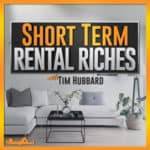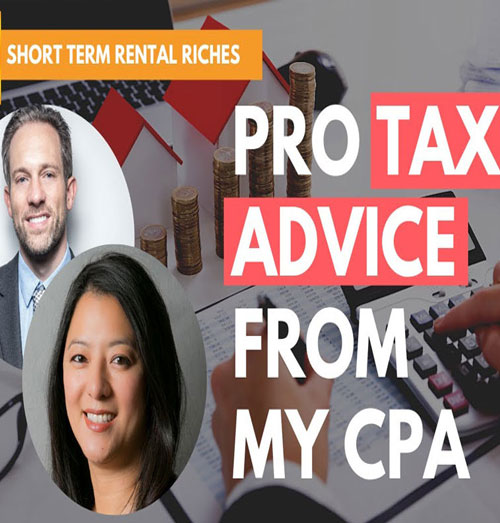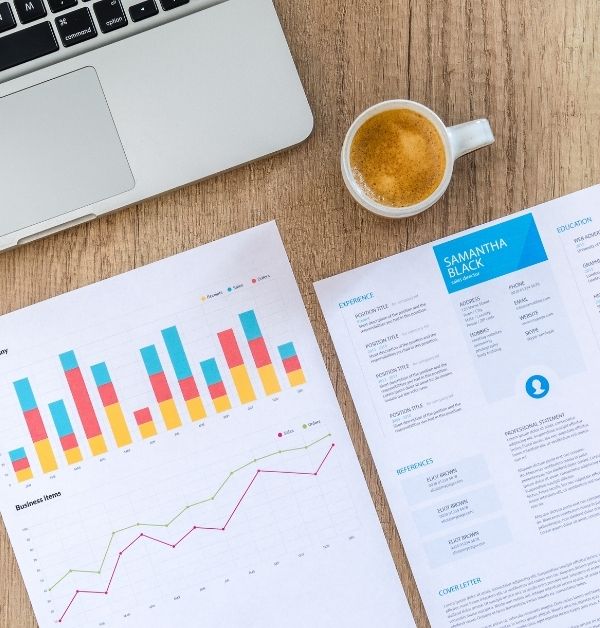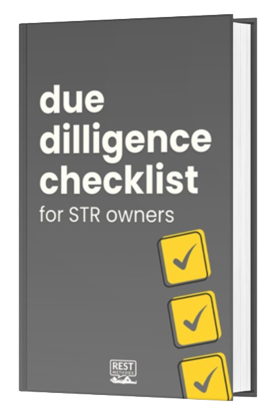Are Your Airbnb Prices Too High? Discover One Easy Insight That Reveals the Truth
Struggling to fill your calendar and keep your Airbnb booked?
Today, we’re going to cover one of the most crucial aspects of running a successful Airbnb—pricing. Whether you’re new to hosting or a seasoned pro, setting the right Airbnb pricing strategy is key to maximizing your occupancy rates and keeping your property fully booked.
In this episode, I’ll walk you through how to use dynamic pricing tools like PriceLabs and Wheelhouse to ensure you’re not leaving money on the table. More specifically, we’ll look at a short-term rental pricing metric that takes only a few seconds to find but can have a huge impact on your revenue.
One common mistake hosts make is setting their Airbnb minimum price too high, even with dynamic pricing in place. I’ll show you how to quickly check if your minimum price is too high and what to do if it is.
Plus, we’ll talk about how to adjust your pricing for weekends, holidays, and low-season periods to stay competitive. If your occupancy has been dropping or you’re concerned about maximizing your Airbnb revenue, then this episode is for you.
Episode Highlights:
- Check Minimum Price Frequency: Find out how often your dynamic pricing tool sets your property at the minimum price and use this data to adjust if needed.
- Create a Wide Pricing Range: Make sure there’s a large gap between your Airbnb base price and your minimum price, allowing dynamic pricing tools to do their job effectively.
- Seasonal & Weekend Adjustments: Always set different Airbnb pricing strategies for weekdays, weekends, and holidays to capitalize on peak demand times.
- Cross-Check Competitor Pricing: Compare your property’s prices to nearby competitors on Airbnb to stay ahead in your local market.
- Lower Prices When Necessary: Don’t be afraid to lower prices during off-peak times to boost your Airbnb occupancy—especially if you have strong guest screening in place.
Thanks for watching! I hope this episode helps you fine-tune your Airbnb pricing strategy and boost your short-term rental revenue. Remember, pricing isn’t a set-and-forget task—it’s dynamic and changes with the market. Keep checking how often your price hits its minimum and adjust as needed to stay competitive.
–
Need help managing your short-term rental and you don’t want to go it alone? Shoot us a message here and we’ll see if we can help.
Are you enjoying the podcast? Please subscribe, leave a rating and a review, and share it! This helps us reach others that may find the info helpful as well.
You can find all of our links here including our recommended resources, short-term rental playbook, Instagram, and more!
Click here to view the transcript
There’s a lot of different price metrics we have to pay attention to with our short term rentals.
The base price, the minimum price, et cetera, et cetera.
But a lot of you are struggling to earn revenue and to maintain occupancy, and I’ve got one little metric that’s going to give you a lot of insight and potentially be the reason why you’re not staying occupied.
It only takes a few seconds to find it.
Stay tuned, let’s jump right in.
Welcome to Short Term Rental Riches.
We’ll discuss investing in real estate, but with a specific focus on short-term rentals.
Quick actual items to acquire, manage and scale your portfolio.
I’m your host, Tim Hubbard.
Welcome back to the show.
I’m happy you’re here again.
I’m talking with a lot of you on a regular basis with properties all over the place.
And if there’s one thing that most people have in common, it’s that they want a little more occupancy.
They want a little bit more revenue.
And the market has changed a little bit.
So on a nationwide basis, we have seen rates come down a little bit and occupancies come down a little bit.
Of course, this really depends on the market you’re in.
So we know real estate is not just one giant market, right?
There’s literally thousands of different markets.
And depending on which one you are in, you could have a little more competition.
But there’s one metric, I’m just gonna jump into it, that’s gonna help you uncover if you’re priced too high.
That’s really what it comes down to.
That is, of course, assuming that you have a good property to start out with, right?
So your listing’s set up well, it’s designed well, and you do a really good job with your guest experience.
If we don’t have good reviews, then pricing strategy isn’t going to really help us that much.
So let’s assume you’ve got those things managed.
And there’s really just one question to ask, is your property staying booked?
And if it’s not, if your occupancy is dropping, well, we need to adjust the prices.
I hope you’re using a dynamic pricing tool like Wheelhouse or PriceLabs.
And assuming you are, there’s a really handy, dandy little metric that tells you how many days out of the near future you can set this 7, 30 or 60 days, that your price is bottoming out.
In other words, how many times over the next, let’s say 60 days, is your price at its minimum?
Just to make things easy, let’s say your minimum rate is $200.
If you look out over the next 60 days and the algorithms from these dynamic pricing tools, so PriceLabs or Wheelhouse, has set your price at that $200 a night, and this is the important piece, you’re not getting booked at all, well, then it’s pretty clear that your minimum price is probably too high.
Before we just jump to the gun, though, we’re gonna want to cross check ourselves and make sure that is indeed the case, but we’ll get to that in one second.
So this metric again is your minimum price hitting dates within the next x period of time.
You can define this in PriceLabs for 7, 30 or 60 days.
Now, if you’re out there and you’re like, Tim, I’m not using a pricing tool.
First of all, you should be, but we have an easy way to check this on Airbnb.
So if you’re using Airbnb’s dynamic pricing tool, where it’s really simple, you can just open up your calendar and you can see how many days out of the next x period of time has that algorithm adjusted your price down to its very lowest price.
So there are, of course, sometimes when you might expect your property to be at its minimum price.
Maybe it’s last minute.
Maybe it’s tomorrow and you don’t have a booking.
Maybe it’s in the middle of the slow season where you hardly see any occupancy.
Well, these are times where we can expect that.
But if we look out throughout the year, so we got to remember that our prices are always changing.
They should always be changing.
So we really want to have a large range between our minimum price and our base price.
So the price that we normally are charging, because if we don’t really have a big range there, well, then the dynamic pricing tool can’t really do its job, right?
Let’s say your minimum price was $200, but you set your base price at $225.
There’s not a lot of room to move around there, right?
You might as well just go back to using fixed prices.
So the idea is that we want to have a big range, but we want to have the right price at the right time.
And so of course that’s changing throughout the year.
I’ve dedicated years and hundreds of thousands of dollars through trial and error to figuring out how to manage my personal portfolio remotely.
And it wasn’t always easy and it took a long time, but now my amazing team can professionally manage my properties without me.
And good news, our team can also manage yours.
Let us save you the stress and headaches and some money by offering you an industry low fee.
To find out more about partnering with us, head to strriches.com, hit the property management button, answer a couple quick questions and meet with me personally.
That’s strriches.com.
Rest easy knowing that with my team, your properties will be in excellent hands.
So this is a really quick one for you this week.
It’s basically get into your calendar, check out how many days your minimum price is being offered.
And if it’s being offered a lot, and you’re still not getting any bookings, well, then that’s a pretty clear sign that you’re going to need to lower your prices.
Again, you might just need to lower them for that seasonal period, or you might just need to lower them at certain times of the week.
We did another episode on different sets of minimum prices.
So I know that sounds a little complicated, but we really shouldn’t have just one minimum price, right?
We should have a weekend minimum price.
We should have a weekday minimum price.
And then we should have a minimum price set around certain holidays.
And so if you missed that episode, you can go over to strriches.com.
You can find all of our past episodes there.
We even have a handy little AI bot in the bottom right-hand corner.
You could just ask it about minimum prices, and it’s going to tell you.
So go back and check out that episode.
And if you wanna take this one step further, you can actually go back and pull up all of your historic prices and see how often your minimum price was offered and you didn’t get a booking.
So if it’s any significant amount of time, let’s say it was 10% or it was 15%, that’s a lot of days where you were likely priced too high and you could have had more opportunity, right?
So go back and look at that.
I know quite a few of you are concerned with maybe lowering your prices too much.
You really shouldn’t be as long as you have all of those sort of safety precautions in place.
So again, we’ve talked about those a lot on this show, having cameras, having rental agreements, collecting a deposit, making sure that you’re checking your guests prior reviews, all those types of things.
But assuming you’re doing that, you really shouldn’t be too concerned with lowering your price a little bit more.
And if the idea for your property is an investment and you want to maximize the revenue, well, we’ve got to make sure that we keep that range large between what our minimum price is and our base rate.
I mentioned a few minutes ago that we want to cross check this, though.
So before you just go and lower your prices, it’s always good to get a second perspective.
And that could be as simple as pulling up some of your competitive properties in your neighborhood on Airbnb.
Or if you’re using PriceLabs, you can use their CompSet features.
Finding those comparable properties, pulling up their calendar, and see what their last minute prices are.
See what their prices are 30 days from now, or 60 days from now.
And if they’re much lower than yours, and they’re also not occupied, well, then that tells you probably have a little more flexibility, or you want to have a little more flexibility with your minimum rate.
So again, you can pull up comps to check that.
You might consider using another pricing tool to compare what you’re seeing on Airbnb, or compare what you’re seeing on your PriceLabs reports, or your Wheelhouse reports, maybe one like KeyData.
So the more information we have, the better strategy we can come up for our short term rentals.
And the better we can do at making sure we’re not leaving money on the table.
So to break this all down in a nutshell, just go back and check your historic reservation.
See how many of those got booked at your minimum price.
See how many days you left vacant that were still at that minimum price, meaning you probably want to have a little bit more flexibility there.
And remember that your minimum price is going to change throughout the year.
It’s going to change based on seasonality.
And so we really just want to have a big range.
So these tools that we’re using can do their job with our oversight, and we can maximize revenue with all of our short-term rentals.
I hope that helped a little bit.
And until next time, I hope you have a fab this week.
Whether you’re just getting started or you have dozens of properties, one thing remains the same.
Poor management can crush your investment returns.
Our team has learned a lot managing over 40,000 guests, and we’ve compiled our biggest takeaways into a handy guidebook to help you better manage your property.
Equipped with checklists for guest verification to pricing strategies, it breaks down our whole process from start to finish.
Best of all, it’s free for you for being one of our loyal subscribers.
You can get your copy by going to strriches.com.
That’s strriches.com, and I hope it helps you earn higher returns with less headache.















